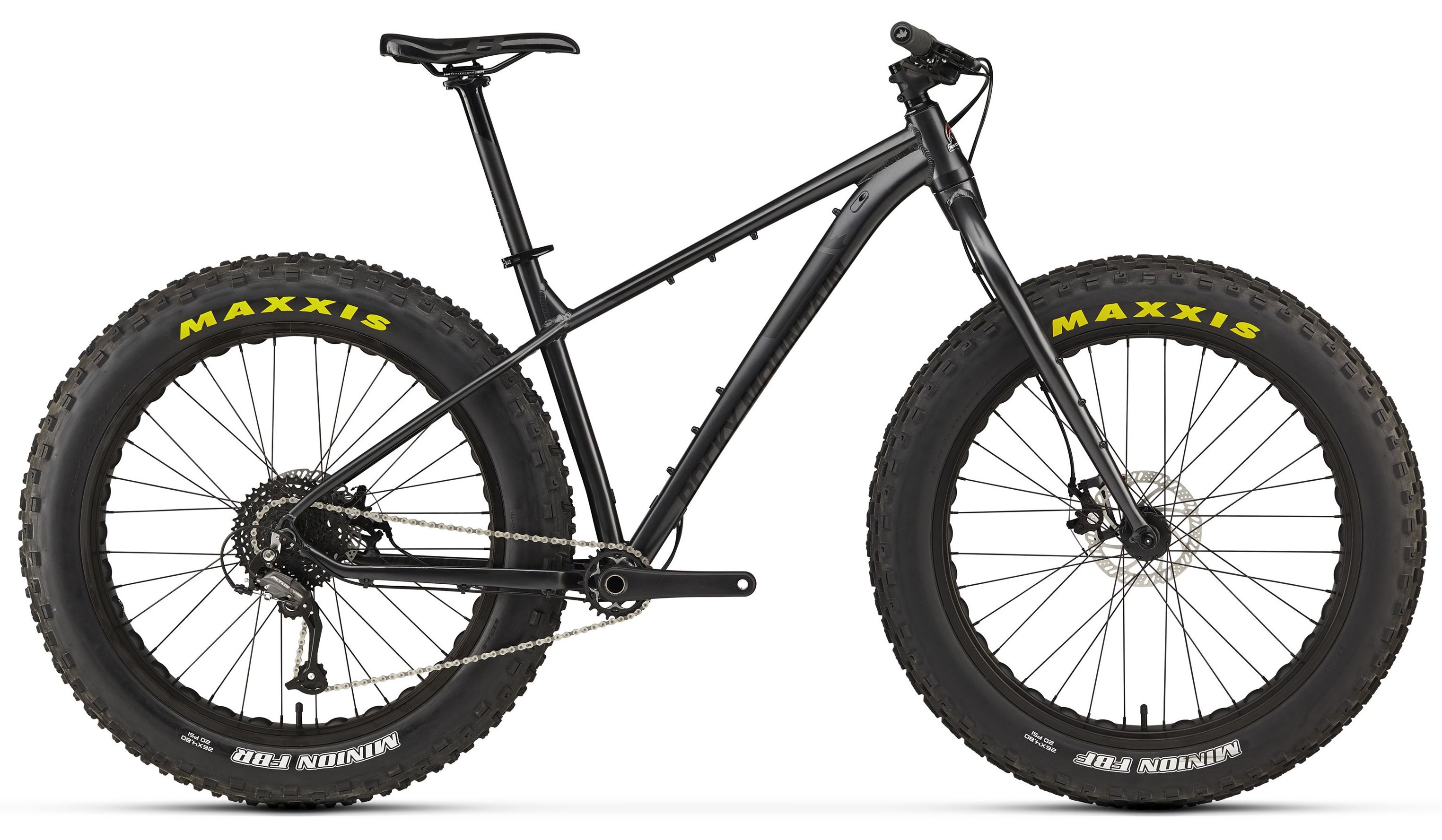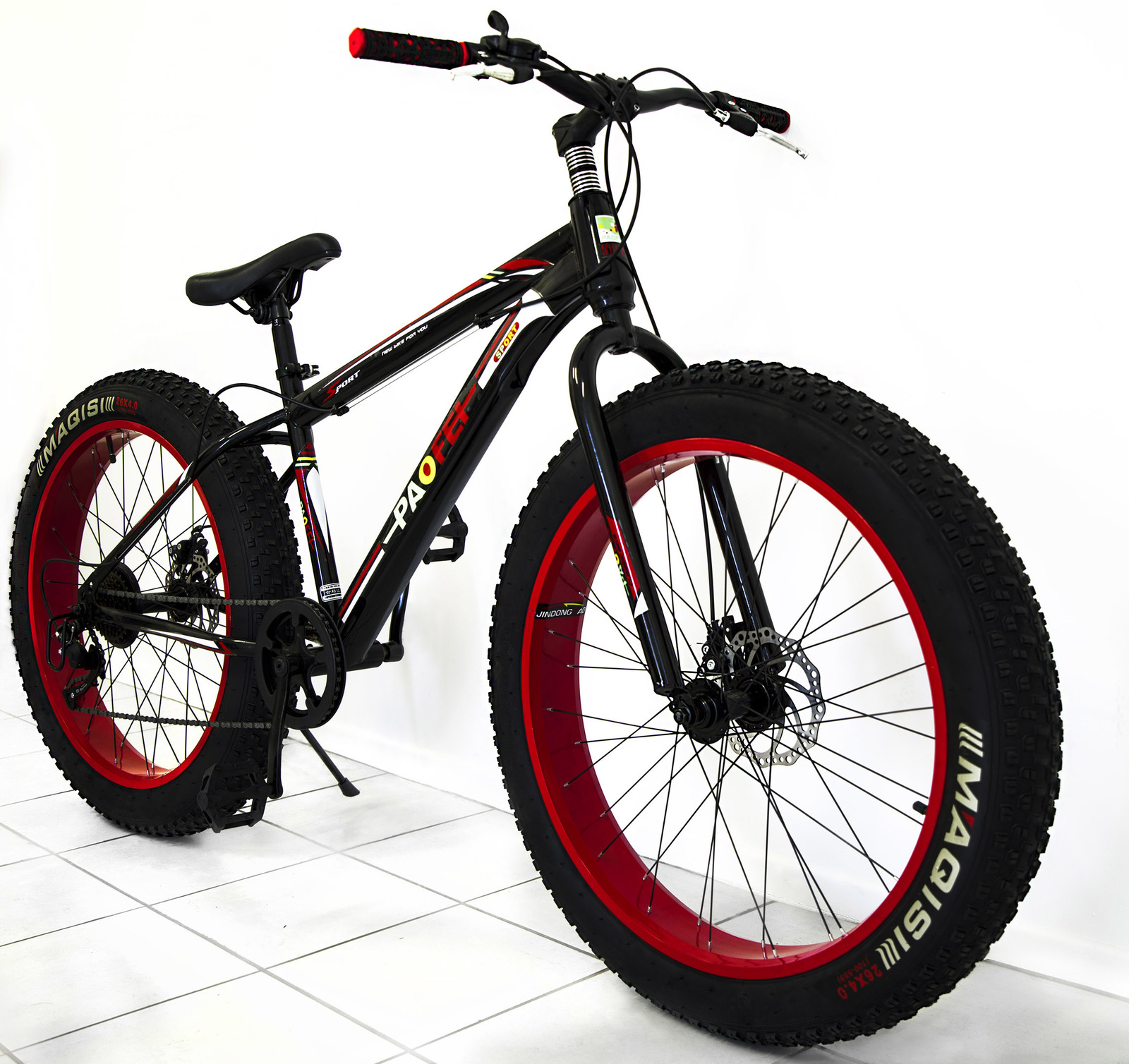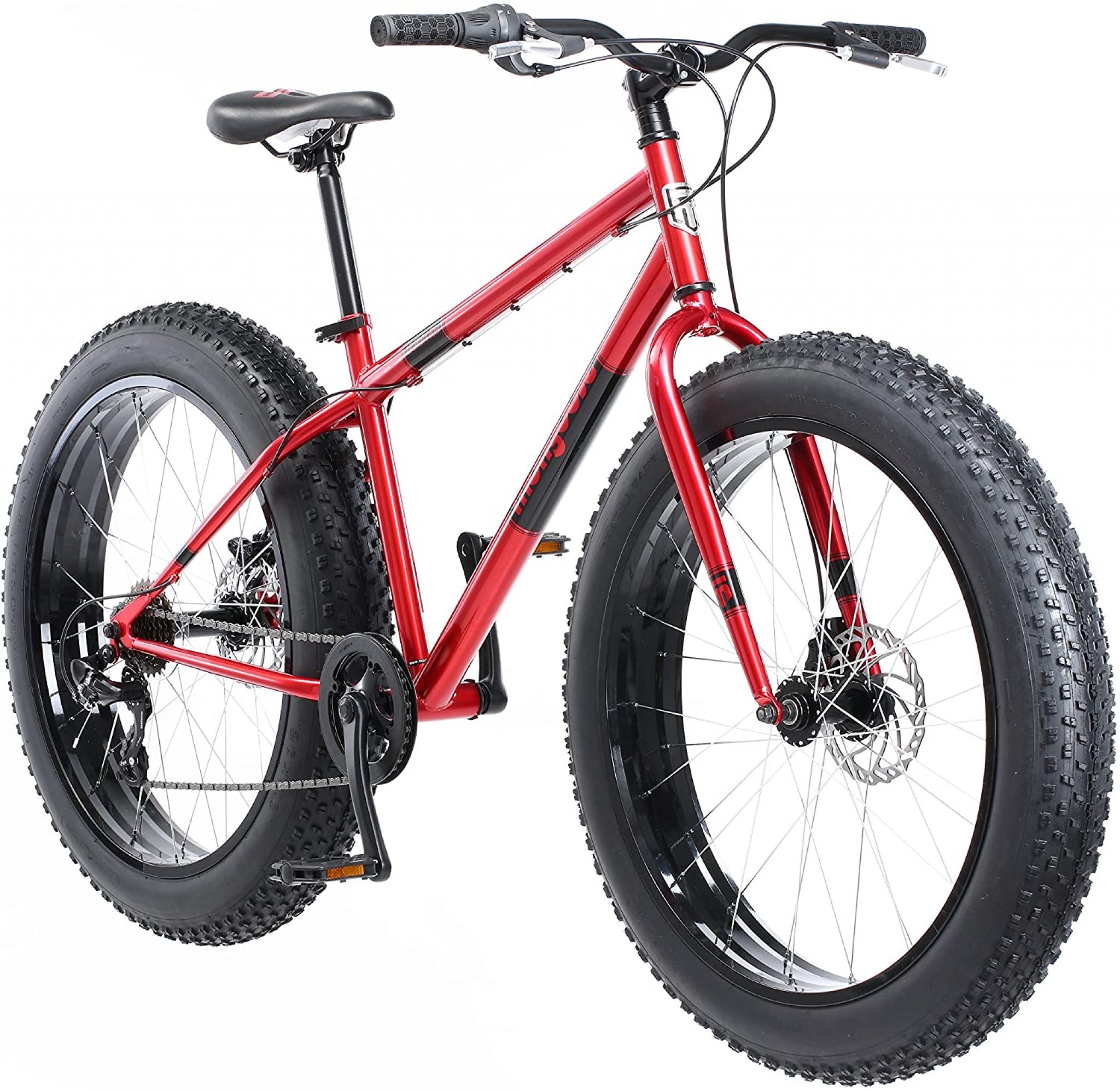Understanding Mountain Bike Fat Tires: An Overview
Mountain bike fat tires are a type of bicycle tire with an increased width, typically ranging from 3.7 to 5 inches, designed to provide superior traction and flotation on various terrains. These tires excel in snow, sand, mud, and other challenging surfaces, making them a popular choice among adventure-seeking cyclists. The benefits of mountain bike fat tires extend beyond off-road capabilities, as they also offer increased comfort and control on paved roads and trails.
Choosing the right mountain bike fat tire is crucial for optimizing performance and ensuring safety in different conditions. Factors such as tire width, tread pattern, rubber compound, and rim compatibility should be carefully considered. Popular brands like Maxxis, Vittoria, and Surly offer a wide range of high-quality fat tire options tailored to various riding styles and preferences.
Selecting the Best Mountain Bike Fat Tires: Key Features to Consider
When choosing the ideal mountain bike fat tire, several essential features should be taken into account. These factors include tire width, tread pattern, rubber compound, and rim compatibility. By understanding these aspects, cyclists can make informed decisions based on their specific needs and preferences.
Tire Width
Mountain bike fat tires typically range from 3.7 to 5 inches in width. A wider tire offers greater flotation and traction on soft surfaces like snow, sand, and mud. However, narrower tires may provide better performance on harder terrains and offer less rolling resistance. Consider the primary riding conditions and terrain types when selecting the optimal tire width.
Tread Pattern
The tread pattern significantly impacts a fat tire’s performance on various terrains. Aggressive tread patterns with deep lugs are ideal for loose surfaces, providing superior grip and traction. Conversely, tires with shallow, tightly-spaced lugs perform better on hard-packed trails and pavement, reducing rolling resistance and increasing speed.
Rubber Compound
The rubber compound used in mountain bike fat tires affects grip, durability, and rolling resistance. Softer compounds offer superior traction but wear down more quickly. Conversely, harder compounds last longer but may sacrifice grip. Some tires feature dual-compound rubber, which combines the benefits of both hard and soft compounds for an optimal balance.
Rim Compatibility
Ensure that the chosen fat tire is compatible with the mountain bike’s rim width. A wider rim provides better support for larger tires, enhancing stability and cornering performance. Popular brands like Maxxis, Vittoria, and Surly offer fat tires with various rim compatibility options, ensuring a secure and efficient fit.
How to Install Mountain Bike Fat Tires: A Step-by-Step Guide
Installing mountain bike fat tires may seem daunting initially, but with the right tools and techniques, the process can be straightforward and efficient. Here’s a step-by-step guide on how to install mountain bike fat tires:
Tools Required
To install mountain bike fat tires, you will need the following tools:
- Tire levers
- Mountain bike pump or air compressor
- Rim tape (if not already installed)
Installing the Tire
- Deflate the tire completely and remove it from the rim.
- Apply rim tape to the rim’s interior, covering the spoke holes to prevent punctures.
- Place one side of the tire onto the rim, ensuring that the valve stem is correctly aligned.
- Insert a tire lever under the tire bead, lifting it over the rim’s edge. Work your way around the tire, using additional levers if necessary, until one side is entirely seated on the rim.
- Insert the inner tube’s valve into the rim and carefully tuck the tube inside the tire.
- Starting from the valve stem, use your hands to carefully push the remaining side of the tire onto the rim, ensuring that the tube is not pinched between the tire and rim.
- Inflate the tire slightly, just enough to give it shape and ensure that it is properly seated on the rim.
- Inspect the tire for any bulges or twists, and adjust as needed.
- Inflate the tire to the recommended pressure, typically found on the tire’s sidewall.
By following these steps, you can successfully install mountain bike fat tires, ensuring a secure fit and optimal performance.
Top Mountain Bike Fat Tire Picks: A Comparative Analysis
Selecting the ideal mountain bike fat tire can be challenging, given the wide array of options available. To help simplify the decision-making process, we’ve compared and contrasted top models from popular brands. Here are our top picks:
1. Maxxis Minion FBF/FBR
The Maxxis Minion FBF/FBR is a versatile tire, suitable for various terrains. Its aggressive tread pattern provides excellent traction on loose surfaces, while its tightly-spaced lugs perform well on hard-packed trails. The dual-compound rubber ensures a balance between grip and durability. However, the Maxxis Minion FBF/FBR is on the pricier side compared to other options.
2. Vittoria Cannoli Graphene 2.0
The Vittoria Cannoli Graphene 2.0 boasts a unique tread pattern that excels in muddy conditions, shedding mud efficiently for consistent performance. Its Graphene 2.0 rubber compound offers exceptional grip and durability. However, the Cannoli Graphene 2.0 is heavier than some competitors, which may impact speed and maneuverability.
3. Surly Lou/Bud
The Surly Lou/Bud is a lightweight and affordable fat bike tire option. The Lou features a tightly-spaced tread pattern, ideal for hard-packed trails, while the Bud has a more aggressive tread for loose surfaces. However, the Lou/Bud’s lower price point may come at the expense of durability compared to more expensive options.
When selecting the best mountain bike fat tire, consider factors such as price, durability, and performance. Each of these top picks offers unique features and benefits, making them suitable for various riding styles and preferences.
Maximizing Performance: Mountain Bike Fat Tire Maintenance and Care
Proper maintenance and care are crucial for ensuring optimal performance and longevity from your mountain bike fat tires. By following these tips and best practices, you can keep your tires in top condition and enhance your overall riding experience.
Inflation Recommendations
Always maintain the recommended tire pressure, typically found on the tire’s sidewall. Under-inflated tires may lead to poor performance, increased rolling resistance, and a higher risk of punctures. Over-inflated tires can reduce traction and increase the likelihood of tire damage. Regularly check tire pressure before rides and adjust as needed.
Tire Rotation
Rotate your mountain bike fat tires periodically to ensure even wear and tear. This practice helps extend the lifespan of your tires and maintains consistent performance. Swap the front and rear tires, as well as the left and right sides, to promote even tread wear.
Cleaning
Clean your mountain bike fat tires after every ride, especially in muddy or dirty conditions. Use a soft brush and mild soap to remove dirt and debris from the tread and sidewalls. Rinse thoroughly and dry completely to prevent corrosion and damage. Regular cleaning also helps you spot any cuts, abrasions, or embedded objects that may require attention.
Storage
When storing your mountain bike, deflate the tires slightly to reduce stress on the tire casing. Store the bike in a cool, dry place away from direct sunlight to prevent tire degradation and cracking. If possible, hang the bike or place it on a stand to avoid flat spots on the tires.
By incorporating these maintenance and care practices, you can maximize the performance and lifespan of your mountain bike fat tires, ensuring a safe and enjoyable riding experience.
Real-World Experiences: Customer Reviews and Testimonials
Understanding the real-world experiences and performance of mountain bike fat tires is crucial when making an informed decision. Here, we share customer reviews and testimonials, highlighting the benefits and challenges users have encountered in various terrains and conditions.
Snow and Sand
Many users praise mountain bike fat tires for their exceptional performance in snow and sand. The increased surface area and aggressive tread patterns provide excellent flotation and traction, making it possible to ride in otherwise challenging conditions. One user shared, “I was amazed at how well my fat bike handled deep snow. It felt like riding on a groomed trail, even in fresh powder!”
Mud and Technical Terrain
Fat tires have also proven effective in muddy and technical terrain, thanks to their ability to shed mud and maintain grip. A reviewer noted, “I’ve taken my fat bike on some gnarly singletrack, and the tires never let me down. They grip well in loose conditions and provide a smooth, comfortable ride.”
Hard-Packed Trails and Roads
While fat tires excel in off-road conditions, some users have found them less efficient on hard-packed trails and roads. A customer shared, “My fat bike is great for off-road adventures, but I wouldn’t choose it for long road rides. The increased rolling resistance makes it more challenging to maintain speed.”
By considering these real-world experiences and performance insights, you can better understand the advantages and limitations of mountain bike fat tires, ultimately helping you make the right decision for your individual needs and preferences.
Mountain Bike Fat Tire Trends and Innovations
The world of mountain bike fat tires is constantly evolving, with new trends and innovations shaping the future of this popular off-road cycling discipline. Here, we discuss some of the latest advancements in mountain bike fat tires and their potential impact on the sport.
Tubeless Technology
Tubeless technology has become increasingly popular in mountain bike fat tires, offering several benefits over traditional tube-type tires. Tubeless setups reduce the risk of punctures, lower rolling resistance, and allow for lower tire pressures, enhancing traction and control. Many popular brands now offer tubeless-ready fat tires, making it easier than ever to enjoy the benefits of this innovative technology.
Wider Rim Compatibility
As mountain bike fat tires continue to grow in popularity, rim manufacturers have responded by developing wider rims to accommodate the increased tire widths. Wider rims provide better support for larger tires, improving handling, stability, and overall performance. This trend toward wider rims has led to the development of new wheelsets specifically designed for fat bikes, further expanding the possibilities for off-road enthusiasts.
Advanced Tread Patterns
Mountain bike fat tire manufacturers are continually refining tread patterns to optimize performance in various terrains and conditions. Advanced tread patterns offer improved traction, mud-shedding capabilities, and reduced rolling resistance. Some brands have even introduced multi-compound rubber formulations, combining soft and hard rubbers to balance grip, durability, and efficiency.
By staying informed about the latest trends and innovations in mountain bike fat tires, riders can make more informed decisions when selecting tires and components, ultimately enhancing their off-road cycling experience.
Choosing the Right Mountain Bike Fat Tire: A Recap
Selecting the ideal mountain bike fat tire is crucial for maximizing off-road performance and ensuring a safe, enjoyable riding experience. By understanding the key features and factors to consider, you can make an informed decision tailored to your individual needs and preferences.
Recap of Key Points
In this comprehensive guide, we’ve covered essential topics related to mountain bike fat tires, including:
- The purpose, benefits, and terrain-specific considerations for mountain bike fat tires.
- Key features to consider when choosing fat tires, such as tire width, tread pattern, rubber compound, and rim compatibility.
- A step-by-step guide on installing mountain bike fat tires, complete with tools required and best practices for a secure fit.
- A comparative analysis of top mountain bike fat tire models from popular brands, highlighting their unique features, pros, and cons.
- Tips and best practices for maintaining and caring for mountain bike fat tires, emphasizing the importance of regular maintenance for optimal performance and longevity.
- Real-world experiences and performance insights from customer reviews and testimonials.
- The latest trends and innovations in mountain bike fat tires, such as tubeless technology, wider rim compatibility, and advanced tread patterns.
Final Recommendations and Considerations
When choosing the right mountain bike fat tire, remember to consider the following factors:
- Your primary riding style and terrain preferences.
- The tire’s width, tread pattern, and rubber compound, as they directly impact traction, durability, and rolling resistance.
- Rim compatibility to ensure a secure and efficient fit.
- Price, durability, and performance, balancing your budget with your desired level of quality and longevity.
- The latest trends and innovations in mountain bike fat tires, as they can significantly enhance your off-road experience.
By carefully evaluating these factors and considering your individual needs, you’ll be well-equipped to choose the perfect mountain bike fat tire for your off-road adventures.








